Geography Part 3: The Continents
There is value in geography. For thousands of years, human beings have worked hard to understand lands, culture, topography, geology, demographics, population, and other parts of the geographic cosmology. Today, we live in a new time after near the end of two decades of the twenty-first century. When you learn about the growth of infrastructure, you are researching geography. When you're learning about trade and basic avenues of journeys, geography is part of the equation. With the advancement of the Internet and other forms of technology, geographic research is commonplace. As time goes on, more people witness the diversity of humanity. We went from having hunter-gathering societies to see the existence of large, metropolitan urban locations like New York City, London, Hong Kong, and Lagos. Long ago, horse travel was common, and now we see more space travel being abundant. In urban and rural locations, there is the evaluation of infrastructure, land territories, rivers, income, health, education, and other indicators of human life. One example is that a city like New York City (filled with five boroughs, almost 9 million people, and numerous water supplies) relies on trade, commerce, and the utilization of its resources to promote its highest potential.
Comparing continents is important, because we see how much value each continent has in the world society. We know of Africa being blessed with many resources and great people. We know of North America and South America having a strong Native American culture along with its influence felt worldwide. We know of Asia being the birthplace of so many spiritual systems and other facets of civilizations. Europe has a myriad of geographic characteristics and an interesting history. Australia is filled with power and creativity. Antarctica is a location that is very cold and explorer still amaze at its wonder. Oceania has some of the most diverse people in the world along with great history.

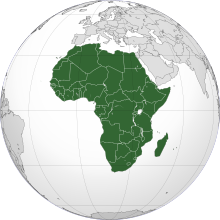

Africa
Africa is the Motherland. Therefore, it is very important to understand its complex geography and cultures. Geography doesn’t just deal with land and rivers. It relates to the culture and demographics of the people that reside in the lands. It focuses on trade, transportation, and other forms of infrastructure. Humanity originated from Africa and migrated to the four corners of the Earth. Africa has the second largest population of any continent on Earth. It has about 1,225,080,510 people as of 2016. Africa also has the second largest land size on Earth with 11,730,000 sq. miles in area. Its population density is 94 square miles. Africa has a very diverse amount of ethnicities, cultures, and languages. That is why folks know about the Yoruba culture and the Xhosa culture. As for the demographics of Africa, Africa’s population has grown massively since the end of the last century (i.e. the 20th century). Africa has a very large youth population too. The most populous African country is Nigeria with 191 million inhabitants as of 2017 and a growth rate of 2.6% p.a. There are human development index studies in Africa too. Africa reached more than one billion by 2009. According to U.N. estimates, Africa may reach 2.5 billion in 2050 and 4.5 billion by 2100. Africa’s population has grown because of lower infant mortality, an increase of life expectancy, and no reduction in the fertility rate. There are many ethnic groups in Africa. Africans who speak Bantu languages (or part of the Niger-Congo family) live mostly in southern, central, and southeast Africa. The Bantu peoples traveled from West Africa’s savanna to most of Africa. Nilotic groups in South Sudan and East Africa have traveled in Africa too along with the Swahili people, and the indigenous Khoisan (San and Khoikhoi) people. Pygmy peoples are found in southern and central Africa. Bantu-speaking Africans also predominate in Gabon and Equatorial Guinea, and are found in parts of southern Cameroon. In the Kalahari Desert of Southern Africa, there are other people as well.
The Niger–Congo-speaking Yoruba, Igbo, Fulani, Akan and Wolof ethnic groups are the largest and most influential ethnic groups of Western Africa. In the central Sahara, Mandinka or Mande groups are most significant. Chadic-speaking groups, including the Hausa, are found in the more northerly parts of the region nearest to the Sahara and Nilo-Saharan communities such as the Kanuri. Zarma and Songhai are present in eastern parts of West Africa bordering Central Africa. North Africa has Berbers, Egyptians, Libyans, and Nilo-Saharan peoples. North Africa has a large Arabic population by the Muslim settlers who came into Africa by the 7th century. The descendants of the Phoenicians, the Hyksos, Greeks, Romans, and Vandals lived in North Africa thousands of years ago. Tuareg people like in Mauritania and other parts of North Africa. Afro-Asiatic speaking peoples are common in Egypt and Sudan. Ethnic groups like the Oromo, Somalia, Habesha, etc. live in the Horn of Africa. Madagascar has its own ethnic groups too. The Malagasy people of Madagascar are Austronesian people and native African people, but those along the coast are generally mixed with Bantu, Arab, Indian and European origins. Malay and Indian ancestries are also important components in the group of people known in South Africa as Cape Coloureds (people with origins in two or more races and continents).
Africa is the largest of the three great southward projections from the largest landmass on Earth. Africa is separated from Europe by the Mediterranean Sea. It is joined to Asia its northeast extremity by the Isthmus of Suez (transected by the Suez Canal). Africa is surrounded by the African tectonic plate. It has 63 political territories. Mount Kilimanjaro is the largest mountain of Africa and its largest lake is Lake Victoria. The average elevation of Africa is about 2,000 ft. above sea level. Coastal plains surround Africa along with the Atlas range. Deserts, plateaus, and tropical forests are around Africa. Farther north the western hollow, known as the Albertine Rift, is occupied for more than half its length by water, forming the Great Lakes of Tanganyika, Kivu, Lake Edward and Lake Albert, the first-named over 400 miles (640 km) long and the longest freshwater lake in the world. Mt. Kilimanjaro is 19,340 feet tall. Mt. Kenya is 17,058 feet tall. Many rivers in Africa got into the basin of the Atlantic Ocean.

To the main African rivers belong: Nile (the longest river of Africa), Congo (river with the highest water discharge on the continent) and the Niger, which flows half of its length through the arid areas. The largest lakes are the following: Lake Victoria (Lake Ukerewe), Lake Chad, in the center of the continent, Lake Tanganyika, lying between the Democratic Republic of Congo, Burundi, Tanzania and Zambia. There is also the considerably large Lake Malawi stretching along the eastern border of one of the poorest countries in the world -Malawi. There are also numerous water dams throughout the continent: Kariba on the river of Zambezi, Aswan in Egypt on the river of Nile and the biggest dam of the continent lying completely in republic of Ghana is called Akosombo on the Volta River (Fobil 2003). The high lake plateau of the African Great Lakes region contains the headwaters of both the Nile and the Congo. The upper Nile goes from Central Africa, Lake Victoria, and then into the Nile to the Mediterranean Sea from the vast delta with fertile lands. African islands are small except for Madagascar. Other African islands are Mauritius, Reunion, Bioko, Cape Verde, etc.
Africa’s climate is heavily situated on the equator. So, it has tropical climates in many areas of the continent. The lower plains and deserts of Africa have great heat. The contrast of temperatures between day and night are real. There are temperature zones in southern Africa. The most important climatic differences are due to variations in the amount of rainfall. The wide heated plains of the Sahara, and in a lesser degree the corresponding zone of the Kalahari in the south, have an exceedingly scanty rainfall. The winds which blow over them from the ocean losing part of their moisture as they pass over the outer highlands, and becoming constantly drier owing to the heating effects of the burning soil of the interior. Yet, the scarcity of mountain ranges in the more central parts likewise tends to prevent condensation. In the inter-tropical zone of summer precipitation, the rainfall is greatest when the sun is vertical or soon after. It is therefore greatest of all near the equator, where the sun is twice vertical, and less in the direction of both tropics. Africa has tropical, subarctic, and other climates. The northern half of Africa is mostly desert or arid. Its central and southern areas contain both savanna plains and dense jungle (rainforest) regions. In between, there is a convergence, where vegetation patterns such as Sahel and steppe dominate. Africa is the hottest continent on Earth and 60% of the entire land surface consists of drylands and deserts. Africa has the largest combination of density and range of freedom of wild animal populations on Earth. It has lions, hyenas, cheetahs, elephants, camels, giraffes, etc. Abundant with natural resources, it has massive poverty and infrastructure at the same time. The African Union is one international body that helps Africa. In a recently published analysis based on World Values Survey data, the Austrian political scientist Arno Tausch maintained that several African countries, most notably Ghana, perform quite well on scales of mass support for democracy and the market economy. The continent is believed to hold 90% of the world's cobalt, 90% of its platinum, 50% of its gold, 98% of its chromium, 70% of its tantalite, 64% of its manganese, and one-third of its uranium.
The Democratic Republic of the Congo (DRC) has 70% of the world's coltan, a mineral used in the production of tantalum capacitors for electronic devices such as cell phones. The DRC also has more than 30% of the world's diamond reserves. Guinea is the world's largest exporter of bauxite. China in recently years have traded heavily in Africa. In terms of health, many organizations are fighting diabetes, HIV/AIDS, malaria, measles, maternal plus infant mortality, and other issues in Africa. There are almost 3,000 languages spoken in Africa like Niger-Congo, Afroasiatic, Nilo-Saharan, Khoi-San, Indo-European, Malayo-Polynesian, Arabic, and other languages. Nigeria alone has over 500 languages spoken in the nation. Niger–Congo is the largest phylum of African languages, with more than 500 million speakers (2017); it is dominated by the Bantu branch, spread throughout sub-Saharan Africa in the Bantu expansion.
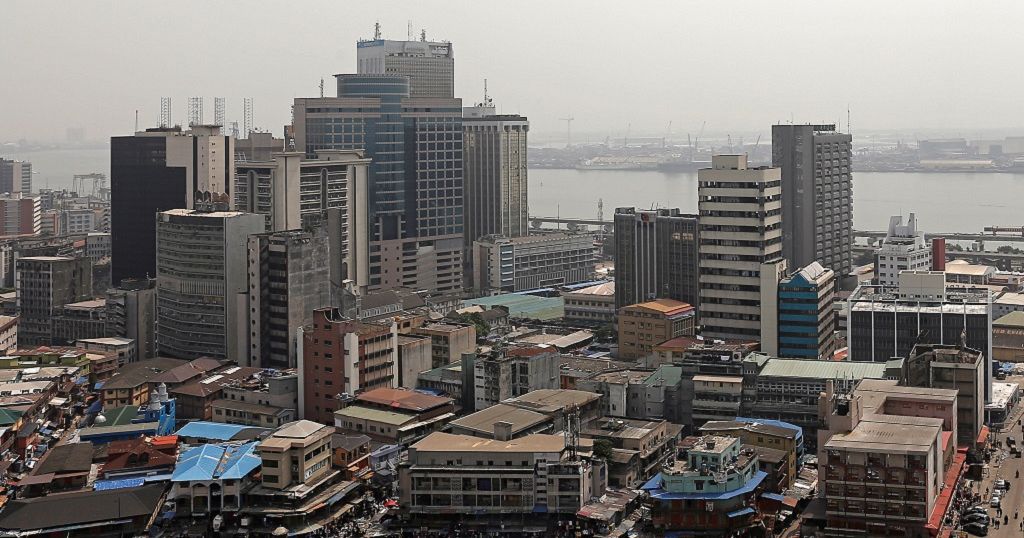
The largest cities in Africa are Lagos, Cairo, Kinshasa, Johannesburg, Abuja, Khartoum, Dar es Salaam, Alexandria, Abidjan, Algiers, Kano, Casablanca, Ibadan, Nairobi, Addis Abada, and Accra. Africans believes in many different religions involving its culture. The Encyclopedia Britannica mentioned that 45% of Africans are Christians, 40% are Muslims, and 10% follow traditional religions. Many Africans follow Hinduism, Buddhism, Confucianism, Baha’i, and Judaism. A minority of Africans are irreligious. The regions of Africa are North Africa, West Africa, Central Africa, East Africa, and Southern Africa. African art has been influenced by ancient cultures, colonialism, and modern realities. African art and architecture in Africa are diverse. African dance has influenced modern samba, blues, reggae, hip hop, and rock. African culture is diverse in dealing with tribal structures to regional displays of expression. Even though African cultures are widely diverse, they are also, when closely studied, seen to have many similarities. For example, the morals they uphold, their love and respect for their culture as well as the strong respect they hold for spirituality. The sculptures and arts and craft are found in ceremonial clothes and paintings. The art of Africa reflect the love of family, customs, and other human interactions. The expression of folklore and religion is found in African culture. Storytelling builds up friends, family, and other love ones. Clothes among ethnic groups in Africa vary. The love of storytelling is also found in African American culture too. The various cuisines of Africa use a combination of locally available fruits, cereal grains and vegetables, as well as milk and meat products. In some parts of the continent, the traditional diet features a preponderance of milk, curd and whey products. In much of tropical Africa, however, cow's milk is rare and cannot be produced locally (owing to various diseases that affect livestock). African culture deals with human upliftment, survival, and social strength.
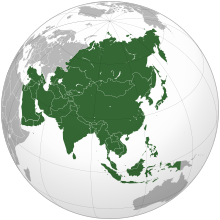

Asia
Asia is the Earth’s largest and most populous continent on Earth. It is found mostly in the Eastern and Northern Hemispheres. It shares the landmass of Eurasia with the continent of Europe and the continental landmass of Afro-Eurasia. Asia has an area of 17,212,000 square miles. It has a population of 4,462,676,731 people as of 2016. Its population density is 260 square miles. Asia encompasses 30% of the Earth’s total land area and 8.7% of the Earth’s total surface area. Asia is the site of many early civilizations like the Sumerians, the Shang dynasty, Mohenjo-daro, etc. It has 60% of the world’s population. Asia is bordered by the east by the Pacific Ocean, on the south by the Indian Ocean, and on the north by the Arctic Ocean. The most commonly accepted boundaries place Asia to the east of the Suez Canal separating it from Africa; and to the east of the Turkish Straits, the Ural Mountains and Ural River, and to the south of the Caucasus Mountains and the Caspian and Black Seas, separating it from Europe. Asia’s geography is diverse. The Himalayan range is home to some of the planet’s highest peaks. Asia has 48 countries and three of the have part of the land in Europe. They are Russia, Kazakhstan, and Turkey. There are arctic and subarctic climates in Siberia and tropical climates in southern India plus Southeast Asia. The western parts of Asia have the most rainfall. The monsoon season dominates southern and eastern Asia. That is due to the presence of the Himalayas forcing the formation of a thermal low which draws in moisture during the summer. Southwestern sections of the continent are hot. Siberia is one of the coldest places in the Northern Hemisphere, and can act as a source of arctic air masses for North America.
The most active place on Earth for tropical cyclone activity lies northeast of the Philippines and south of Japan. The Gobi Desert is in Mongolia and the Arabian Desert stretches across much of the Middle East. The Yangtze River in China is the longest river in the continent. The Himalayas between Nepal and China is the tallest mountain range in the world. Tropical rainforests stretch across much of southern Asia, plus coniferous and deciduous forests lie farther north.
There are the Kerala backwaters, the Mongolian steppe, the South China Karst, the Altai Mountains, and the Hunza Valley. Many areas in Asia are vulnerable to climate change. That is why people want a more science based approach to cope with climate change in Bangladesh, India, Vietnam, Thailand, Pakistan, and Sri Lanka. In the tropical parts of India, the temperature has increased by 0.4 degrees Celsius between 1901 and 2003. On the southeast of Asia are the Malay Peninsula (the limit of mainland Asia) and Indonesia ("Isles of India", the former East Indies), a vast nation among thousands of islands on the Sunda Shelf, large and small, inhabited and uninhabited. Australia nearby is a different continent. The Pacific islands northeast of Australia more remotely removed from Japan and Korea are Oceania rather than Asia. From Indonesia the border runs along the Indian Ocean to the Red Sea. Most of the islands in the Indian Ocean are Asian. The major regions of Asia were Central Asia, East Asia, South Asia, Southeast Asia, North Asia, and Western Asia. The longest rivers in Asia are the Yangtze, the Yellow River, the Lena River, the Irtysh River, the Brahmaputra River, the Ob River, the Indus River, the Yenisei River, and other rivers. The highest mountains in Asia are Mount Everest, Godwin Austen, Kangchenjunga, Lhotse, Makalu, etc.
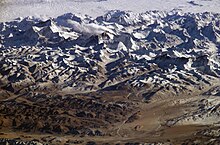
Just like in many places of the world, health issues are diverse in many parts of Asia. HIV/AIDS incidents have been stable since 2000. Their human development index is diverse in many regions of Asia as well. Asia had the strongest overall HDI improvement of any region in the world. Nepal, a South Asian country, emerges as one of the world's fastest movers since 1970 mainly due to health and education achievements. Its present life expectancy is 25 years longer than in the 1970's. More than four of every five children of school age in Nepal now attend primary school, compared to just one in five 40 years ago. There are more than 600 languages spoken in Indonesia, more than 800 languages spoken in India, and more than 100 are spoken in the Philippines. China has many languages in different provinces too. The largest cities in Asia are Tokyo, Jakarta, Delhi, Karachi, Seoul, Shanghai, Manila, Mumbai, Beijing, Guangzhou, Osaka, Dhaka, Bangkok, Chennai, Chittagong, Tehran, Dubai, Ho Chi Minh City, and Singapore. Many of the major world religions are found in Asia like Christianity, Judaism, Islam, Hinduism, Chinese folk religions (like Confucianism and Taoism), Buddhism, and other creeds. The story of the Great Flood, the story of Vishnu, and other stories are found in Asia. West Asia is the place where Abrahamic religions originated from which are Judaism, Christianity, Islam, and Baha’i. The culture of Asia is very unique. There is the Western Wall, the Dome of the Rock, and the Kaaba in Asia. Asian art does deal with calligraphy or various paintings. Almost 400 million Christians live in China. Most Israelis follow Judaism. 23.8 percent of the total population of Asia is Muslim. It is the second largest religion in Asia. Hinduism has about 1.1 billion adherents. It represents about 25 percent of Asia’s population being the largest religion in Asia. It is found mostly in South Asia. Many Asian people won Nobel Peace Prizes like Rabindranath Tagore, C. V. Raman, Mo Yan, Orhan Pamuk, etc.

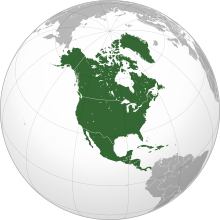
North America
I was born in North America. Therefore, I know a lot about its history, geography, and culture. It is found on the Northern Hemisphere. It stretches from Central America to Greenland. North America has some of the diverse cultures in human history. It is bordered by the Arctic Ocean to the north, to the east by Atlantic Ocean, and by the Pacific Ocean to the west. It encompasses the Caribbean Sea and it is north of South America. North America has an area of 9,540,000 square miles. Its population density is 59.3 square miles. It has 23 sovereign states and 23 non-sovereign territories. It has 579.024,000 people as of 2016. It is the 4th largest continent in terms of population on Earth. It is the third largest continent in the world in terms of land area. North America has about 16.5% of the Earth’s land of its total surface. North America’s geography is complex too. It is a subcontinent. It has a land connection to South America at the Isthmus of Panama. There is the Darien watershed along the Colombia/Panama border. It places all of Panama within North America. Alternatively, some geologists physiographically locate its southern limit at the Isthmus of Tehuantepec, Mexico, with Central America extending southeastward to South America from this point. The Caribbean islands, or West Indies, are considered part of North America. The continental coastline is long and irregular. The Gulf of Mexico is the largest body of water indenting the continent, followed by Hudson Bay. Others include the Gulf of Saint Lawrence and the Gulf of California. North America is surrounded by the North American plate.
North America has four great regions (in each region, there are many sub regions too). These large regions are the Great Plains that goes from the Gulf of Mexico to the Canadian Arctic, the Canadian Arctic (the area of the Rocky Mountains), the Canadian Shield, the coastal plain (in the Atlantic seaboard), and the Florida peninsula. The western mountains are split in the middle into the main range of the Rockies and the coast ranges in California, Oregon, Washington, and British Columbia, with the Great Basin—a lower area containing smaller ranges and low-lying deserts—in between. The highest peak is Denali in Alaska. The northern part of North America is sparsely population and covered mostly by Canada. The central and south portions of the continent have the United States, Mexico, Central America, and the Caribbean. There are glacial lakes formed during the last glacial period including the Great Lakes. The Rocky Mountains has the continent’s divide or the Great Divide. The major watersheds all drain to the east: The Mississippi/Missouri and Rio Grande into the Gulf of Mexico, and St. Lawrence into the Atlantic. There are colder climates in higher latitudes and warmer climates in lower latitudes.
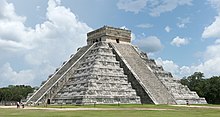

The western half of North America tends to have milder and wetter climate than other areas with equivalent latitude, although there are steppes (known as "prairies") in the central and western portions, and deserts in the Southwestern United States of Arizona, Colorado, California, Nevada, New Mexico, Utah, Oklahoma, and Texas; along with the Mexican states of Baja California, Baja California Sur, Sonora, Chihuahua, Coahuila, Nuevo Leon and Tamaulipas. The Great Plains has a steepe climate. Canada and north Alaska have subarctic and tundra climates. Plants like coniferous trees, sequoias, redwoods, sugar pines, etc. are found in America. North America grows potato, vanilla, melons, cacao, gourds, indigo plants, beans, etc. Temperate climates exist in North America too. The major rivers of North America are the Mississippi River, Missouri River, Rio Grande, Ohio River, Columbia River, Saint Lawrence River, Colorado River, Yukon River, etc. The Great Lakes, Lake Superior, the Gulf of Mexico, etc. deal with habitat, transportation, trade, etc.
North America has some of the most developed health care systems on Earth. Advanced health care does exist in America and Canada. Also, in North America, people are fighting for health care rights as well. Climate change is being dealt with in North America. The dominant languages in North America are English, Spanish, and French. Greenland has people speaking Danish and Greenlandic. The wealthiest nations in North America are America, Canada, and Mexico. Mexico is newly industrialized nation. The countries of Central America and the Caribbean are at various levels of economic and human development. . For example, small Caribbean island-nations, such as Barbados, Trinidad and Tobago, and Antigua and Barbuda, have a higher GDP (PPP) per capita than Mexico due to their smaller populations. Panama and Costa Rica have a significantly higher Human Development Index and GDP than the rest of the Central American nations. Most North Americans are of European descent, African descent, Latino descent, and multiracial descent. Indigenous Americans and Asians are in North America as well. Part of the Caribbean speaks Portuguese and other languages. Haiti is included with this group based on historical association but Haitians speak both Creole and French. Similarly, French and French Antillean Creole is spoken in Saint Lucia and the Commonwealth of Dominica alongside English.
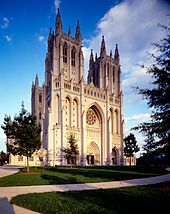
In terms of religion, Christianity is the largest religion in North America. According to a 2012 Pew Research Center survey, 77% of the population considered themselves Christians. Christianity is the predominant religion in the 23 dependent territories in North America. America has the largest Christian population in the world with almost 247 million Christians (70% of Americans). Mexico has the world’s second largest number of Catholic people surpassed only by Brazil. Muslims, followers of Judaism, atheists, Hindus, Buddhists are found in North America too. The predominant religion in Central America is Christianity (96%). Beginning with the Spanish colonization of Central America in the 16th century, Roman Catholicism became the most popular religion in the region until the first half of the 20th century. Since the 1960s, there has been an increase in other Christian groups, particularly Protestantism, as well as other religious organizations, and individuals identifying themselves as having no religion. Also Christianity is the predominant religion in the Caribbean (85%). Other religious groups in the region are Hinduism, Islam, Rastafari (in Jamaica), and Afro-Caribbean religions such as Santeria and Voodoo. The largest cities in North America are Mexico City, New York City, Los Angles, Toronto, Chicago, Houston, Havana, Montreal, Ectepc de Morelos, Philadelphia, Phoenix, San Antonio, Guadlaljara, Puebla, San Diego, Juarez, etc. Culture in America is a merging of African, European, Native American, Asian, and other influences. African Americans have influenced American culture a great deal. The political actions of people like Maya Angelou, the music of hip hop (including jazz, soul, R&B, etc.), the art of Augusta Savage, and other contributions of African Americans ought to be respected. Spanish and Native Americans influence Central American culture. The culture of immigration has developed North American culture too. Soccer, football, baseball basketball, ice hockey, and other sports dominate North America. Trade deals, transportation, and inventions are common too in this continent. Art and music are some of the most popular genres of music on Earth from hip hop, rock, gospel, country, and Caribbean music. Cultural diffusion is one major theme of North American culture.
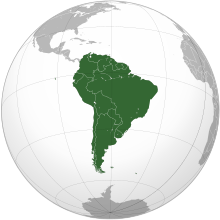
South America
South America is a very important continent with its own culture and geography. It’s located in the Western Hemisphere and mostly in the Southern Hemisphere (with a small portion of it in the Northern Hemisphere). It is an area with massive political and social changes. It has an area of 6,890,000 square miles being the fourth largest continent in the world. Its population is 420,458,044 people being the fifth largest continent in the world in terms of population. It has 12 nations and 4 dependencies. Geopolitical changes have existed in Brazil, Venezuela, etc. Pacific Ocean areas are to the west of South America, the Atlantic Ocean is found to the east and north of the continent, and the Caribbean Sea is to the northwest. Brazil is by far the most populous South American country, with more than half of the continent's population, followed by Colombia, Argentina, Venezuela and Peru. In recent decades Brazil has also concentrated half of the region's GDP and has become a first regional power. Most people in South America live in the western or eastern coasts while the far south and interior are less densely populated. The population density of South America is 56 square miles. The geography of western South America is dominated by the Andes Mountains; in contrast, the eastern part contains both highland regions and vast lowlands where rivers such as the Amazon, Orinoco, and Paraná flow. Most of the continent lies in the tropics.
The continent's cultural and ethnic outlook has its origin with the interaction of indigenous peoples with European conquerors and immigrants and, more locally, with those of black African descent. Given a long history of colonialism, the overwhelming majority of South Americans speak Portuguese or Spanish, and societies and states reflect Western traditions. The Darien watershed along the Colombia/Panama border is very important. Almost all of mainland South America is found on the South American Plate. South America has the highest uninterrupted waterfall. For example, Angel Falls in Venezuela; the highest single drop waterfall Kaieteur Falls in Guyana; the largest river (by volume) and by length, the Amazon River; the longest mountain range, the Andes (whose highest mountain is Aconcagua at 6,962 m or 22,841 ft.); the driest non-polar place on earth, the Atacama Desert; the largest rainforest, the Amazon Rainforest; the highest capital city, La Paz, Bolivia; the highest commercially navigable lake in the world, Lake Titicaca; and, excluding research stations in Antarctica, the world's southernmost permanently inhabited community, Puerto Toro, Chile. Minerals in South America are gold, silver, copper, iron ore, tin, and petroleum. These resources have caused many people to high income within many areas of South America. Industrialized nations use South American resources too. South America is one of the most biodiverse continents on earth. South America is home to many interesting and unique species of animals including the llama, anaconda, piranha, jaguar, vicuña, and tapir. The Amazon rainforests possess high biodiversity, containing a major proportion of the Earth's species.

Brazil is the largest country in South America, encompassing around half of the continent's land area and population. The remaining countries and territories are divided among three regions: The Andean States, the Guianas and the Southern Cone. South America has many islands like Aruba, Conaire, Curacao, etc. There are federal dependencies of Venezuela. Other islands that are included with South America are the Galápagos Islands that belong to Ecuador and Easter Island (in Oceania but belonging to Chile), Robinson Crusoe Island, Chiloé (both Chilean) and Tierra del Fuego (split in between Chile and Argentina). In the Atlantic, Brazil owns Fernando de Noronha, Trinidad and Martim Vaz, and the Saint Peter and Saint Paul Archipelago, while the Falkland Islands are governed by the United Kingdom, whose sovereignty over the islands is disputed by Argentina. South Georgia and the South Sandwich Islands may be associated with either South America or Antarctica. Temperate climate have milder winters and summers warmer than in North America. Much of South America is at the equatorial zone. There is the Maracaibo Lake and other bodies of water.
The east-central Brazilian plateau has a humid and warm tropical climate. The northern and eastern parts of the Argentine pampas have a humid subtropical climate with dry winters and humid summers of the Chinese type, while the western and eastern ranges have a subtropical climate of the dinaric type. At the highest points of the Andean region, climates are colder than the ones occurring at the highest point of the Norwegian fjords. In the Andean plateaus, the warm climate prevails, although it is tempered by the altitude, while in the coastal strip, there is an equatorial climate of the Guinean type. From this point until the north of the Chilean coast appear, successively, Mediterranean oceanic climate, temperate of the Breton type and, already in Tierra del Fuego, cold climate of the Siberian type. South America has a population growth rate of 0.6 percent year. The demographics of South America is diverse. South America is made up of Native Americans, descendants of Europeans (like Spaniards, Portuguese, the Dutch, and Italians), people who are of African descent, Asians, etc. Spanish and Portuguese are the most spoken languages in South America. 200 million speakers each are involved in both languages. Dutch is spoken at Suriname. English is found in Guyana. English is spoken at the Falkland Islands. French is spoken at Guiana and the second language of Amapa, Brazil. Indigenous languages of South America include Quechua in Peru, Bolivia, Ecuador, Argentina, Chile and Colombia; Wayuunaiki in northern Colombia (La Guajira) and northwestern Venezuela (Zulia); Guaraní in Paraguay and, to a much lesser extent, in Bolivia; Aymara in Bolivia, Peru, and less often in Chile; and Mapudungun is spoken in certain pockets of southern Chile and, more rarely, Argentina.
At least three South American indigenous languages (Quechua, Aymara, and Guarani) are recognized along with Spanish as national languages. 90 percent of South America are Christians. It includes 82 percent Roman Catholics and 8 percent other denominations. African descendant religions are found in Brazil and other parts of South America too. Many Jewish followers of Judaism live in Argentina at Buenos Aires, and in Sao Paulo, Brazil. Japanese Buddhism, Shintoism, and Shinto-derived Japanese. New Religions are common in Brazil and Peru. Korean Confucianism is especially found in Brazil while Chinese Buddhism and Chinese Confucianism have spread throughout the continent. The culture of South America includes music, commerce, food, and other cultural celebrations. The indigenous people of South America live in the Amazon rainforest and other communities. The tango, vallenato, pasillo, samba, bossa, nova, and other forms of music are influential in world music. The Rio Olympics in South America outlined talent and the strength of athletics. Also, many people in South America play cycling, polo, rugby, basketball, boxing, etc. The largest cities in South America are Sao Paulo, Lima, Bogota, Lima, Rio de Janeiro, Santiago, Caracas, Buenos Aires, Salvador, etc.
*In the near future, information on the rest of the continents will be shown.
By Timothy

No comments:
Post a Comment